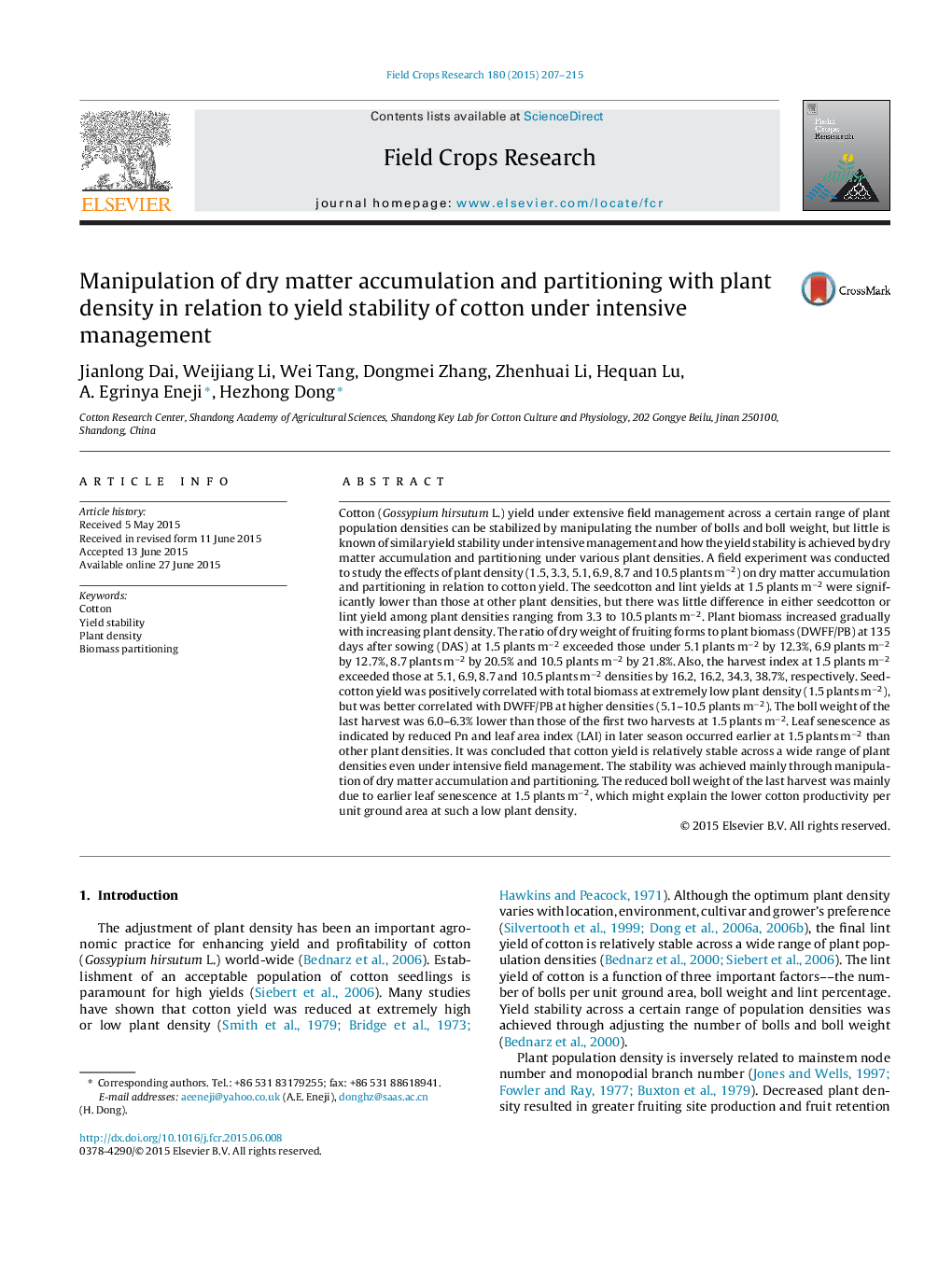| Article ID | Journal | Published Year | Pages | File Type |
|---|---|---|---|---|
| 6374816 | Field Crops Research | 2015 | 9 Pages |
Abstract
Cotton (Gossypium hirsutum L.) yield under extensive field management across a certain range of plant population densities can be stabilized by manipulating the number of bolls and boll weight, but little is known of similar yield stability under intensive management and how the yield stability is achieved by dry matter accumulation and partitioning under various plant densities. A field experiment was conducted to study the effects of plant density (1.5, 3.3, 5.1, 6.9, 8.7 and 10.5 plants mâ2) on dry matter accumulation and partitioning in relation to cotton yield. The seedcotton and lint yields at 1.5 plants mâ2 were significantly lower than those at other plant densities, but there was little difference in either seedcotton or lint yield among plant densities ranging from 3.3 to 10.5 plants mâ2. Plant biomass increased gradually with increasing plant density. The ratio of dry weight of fruiting forms to plant biomass (DWFF/PB) at 135 days after sowing (DAS) at 1.5 plants mâ2 exceeded those under 5.1 plants mâ2 by 12.3%, 6.9 plants mâ2 by 12.7%, 8.7 plants mâ2 by 20.5% and 10.5 plants mâ2 by 21.8%. Also, the harvest index at 1.5 plants mâ2 exceeded those at 5.1, 6.9, 8.7 and 10.5 plants mâ2 densities by 16.2, 16.2, 34.3, 38.7%, respectively. Seedcotton yield was positively correlated with total biomass at extremely low plant density (1.5 plants mâ2), but was better correlated with DWFF/PB at higher densities (5.1-10.5 plants mâ2). The boll weight of the last harvest was 6.0-6.3% lower than those of the first two harvests at 1.5 plants mâ2. Leaf senescence as indicated by reduced Pn and leaf area index (LAI) in later season occurred earlier at 1.5 plants mâ2 than other plant densities. It was concluded that cotton yield is relatively stable across a wide range of plant densities even under intensive field management. The stability was achieved mainly through manipulation of dry matter accumulation and partitioning. The reduced boll weight of the last harvest was mainly due to earlier leaf senescence at 1.5 plants mâ2, which might explain the lower cotton productivity per unit ground area at such a low plant density.
Related Topics
Life Sciences
Agricultural and Biological Sciences
Agronomy and Crop Science
Authors
Jianlong Dai, Weijiang Li, Wei Tang, Dongmei Zhang, Zhenhuai Li, Hequan Lu, A. Egrinya Eneji, Hezhong Dong,
